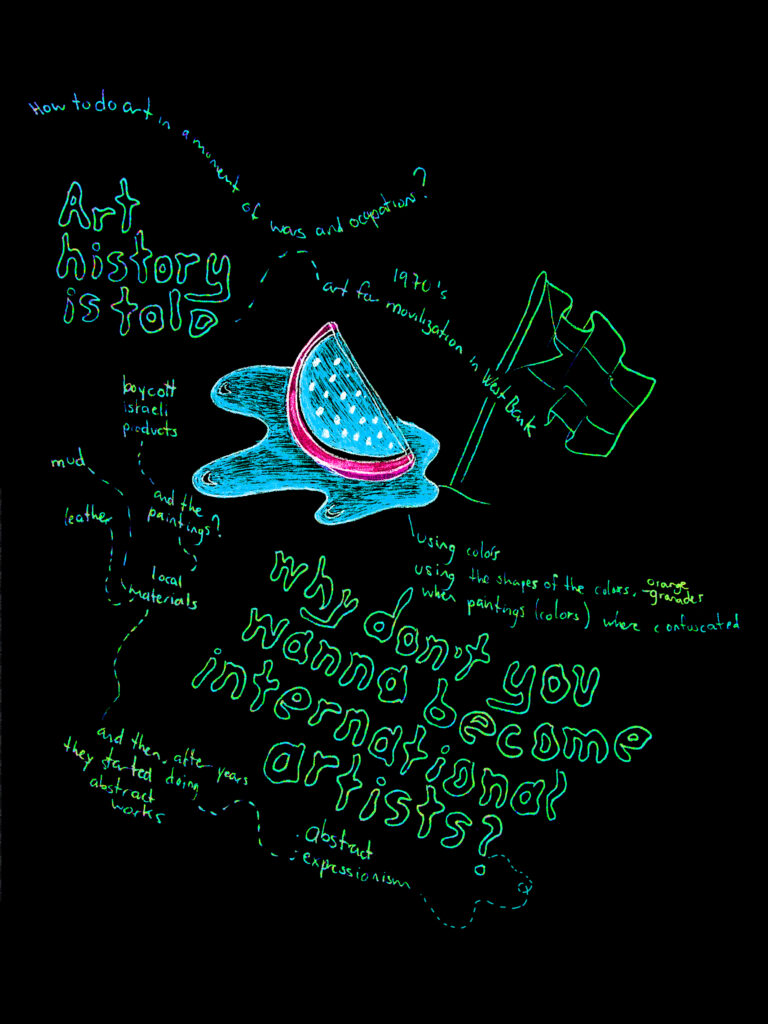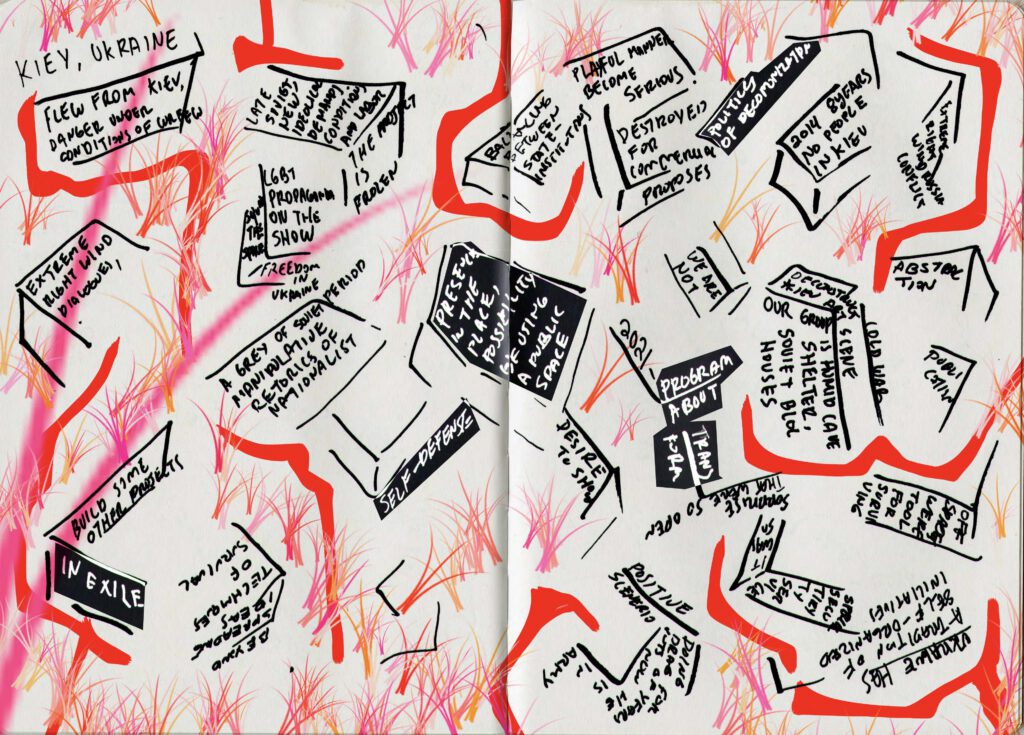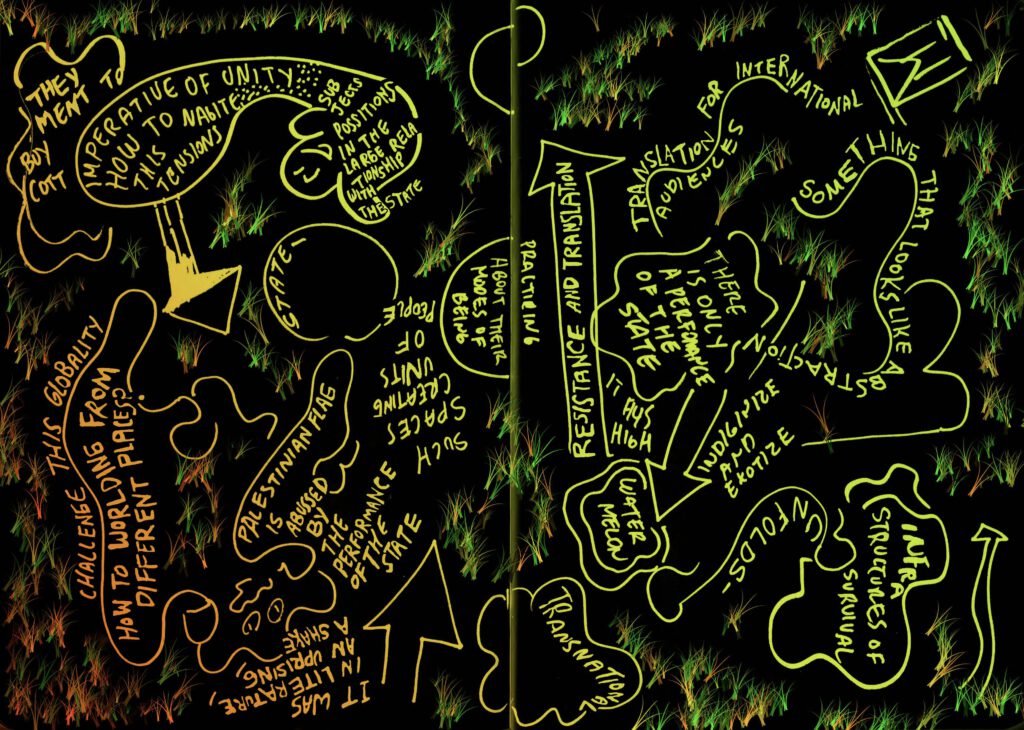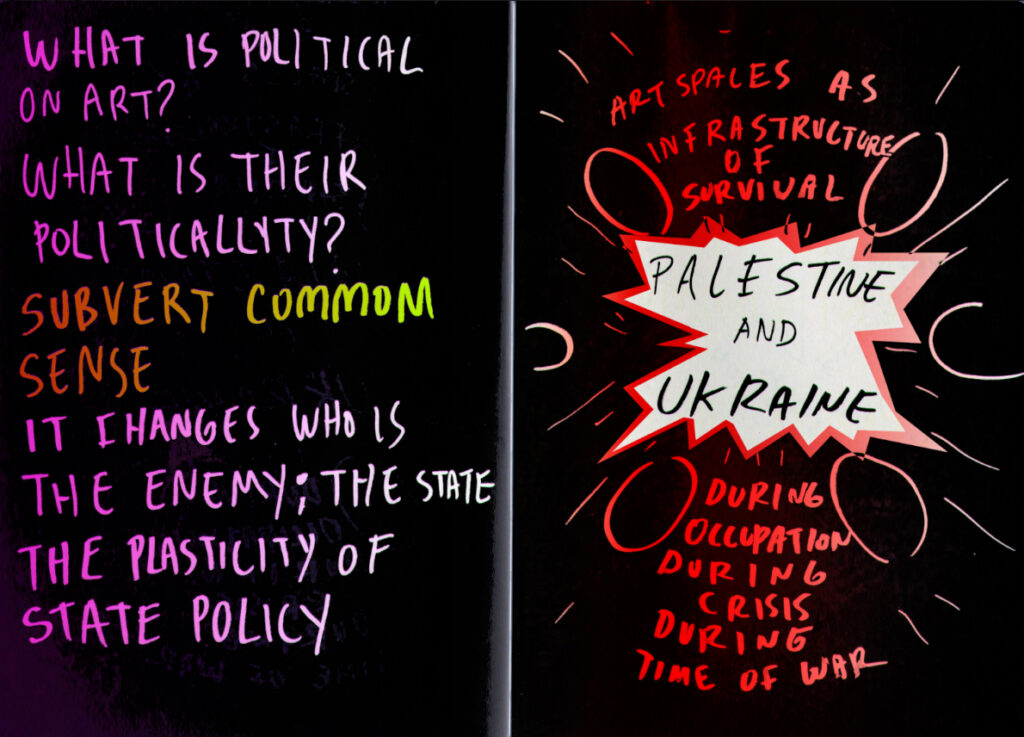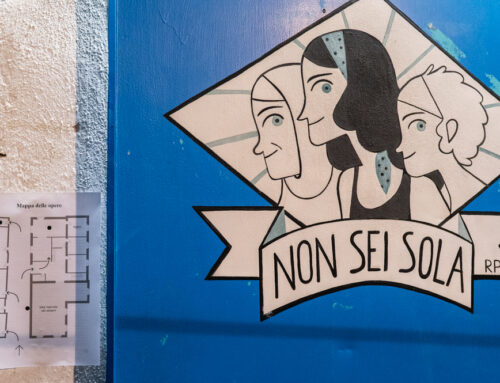Art in War
Lara Khaldi, Ming Tiampo and Wet Hole Group (Nikita Kadan, Bogdana Kosmina, Alina Kleytman).
Harvest by Daniel Aguilar and Diana Cantarey
Hosted by Eszter Szakács
Art in War discussed art making and art organisation under conditions of war, invasion, and occupation, with the contributions of cultural worker Lara Khaldi, the Wet Hole Group (artists Nikita Kadan, Alina Kleytman, Bogdana Kosmina), and art historian Ming Tiampo. The panel looked at 1970s-1980s Palestinian art and contemporary politically engaged artistic practices in and from Ukraine. Speakers focused on artists as makers of institutions and carriers of histories and on how their bodies become both survival institutions and archival documentation of it in contexts of infrastructural destruction.
Khaldi explored two key moments of Palestinian art history as recounted by the artists themselves. In the late 1970s Palestine, Sliman Mansour and Nabil Anani were using the Palestinian flag’s colours to paint because raising that flag was banned by the occupying Israeli army. But these artworks were confiscated, nonetheless. According to their story, when Mansour and Anani went to the military post to claim the works back, the officer offered them coffee, engaged them in a discussion, and encouraged them to paint abstract, avant-garde art – i.e., politically unproblematic works—instead of national symbolism. The artists only wanted their works back. Years later, during the First Intifada in the late 1980s, to boycott Israeli-made canvases and paints, Mansour and Anani began experimenting with local materials, like mud and leather. Placing the ‘political’ in the means and forms of art rather than in its content uncannily rendered their work more abstract.
Ukranian curatorial collective Wet Hole Group spoke about their organisational practice in the independent art space Dzherelo (Source). They set it up in Kyiv in 2020 in an abandoned late Soviet-style pump house that the artists decided to squat and reuse against the post-Soviet trend of destroying socialist infrastructure. In the 24/7 ‘lockdown proof’ exhibition program, visitors could enjoy video works, performances, and experimental music from the outside through windows. Dzherelo belongs to a tradition of self-organised institutions in Ukraine established by artists who became more politically engaged since the mid-2000s. Rather than representing specific art forms, these spaces were meant to build a community that could function as survival technique in extreme conditions. The full-scale Russian invasion of Ukraine in February 2022 forced the pump house exhibition to stop and dispersed the members of the collective. Under protracted war conditions, the Documenta workshop offered them the first opportunity to meet in person. By showing a selection of video works by Ukrainian artists at documenta fifteen, the collective further pursued its firm intent not to lose Dzherelo’s community and power. The ‘digital community space‘ that the Wet Hole recently launched continues this work by archiving and making accessible the activities of Dzherelo and the Kyiv underground.
In her harvest, Ming Tiampo revisited the concept of ‘infrastructures of survival’ as a practice of institution-building in a non-Western-centric art world. ruangrupa’s lumbung exemplifies this practice. For Tiampo, its purpose is not to save Western institutions but to co-create opportunities for multiple worlds to survive and flourish.
